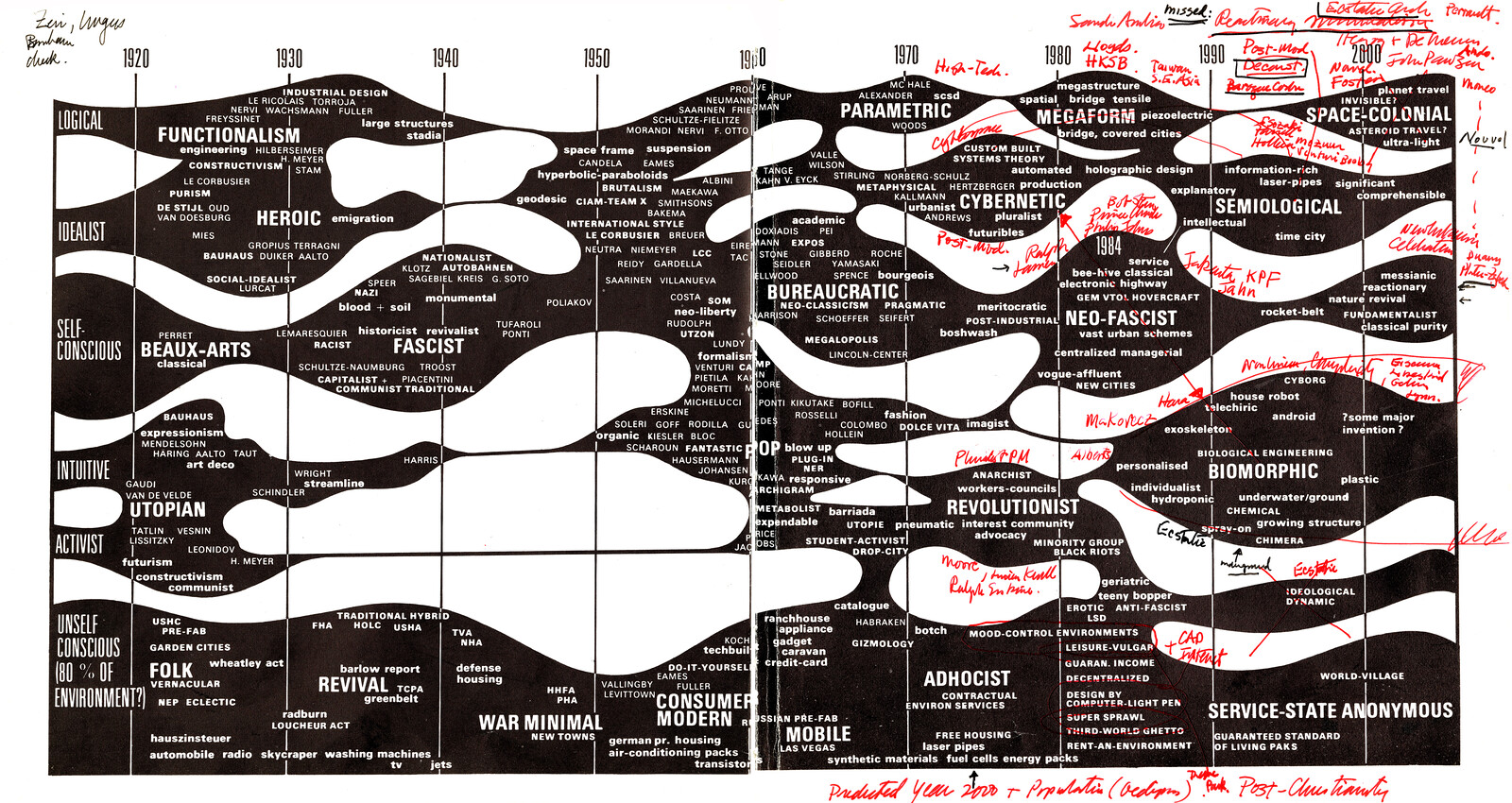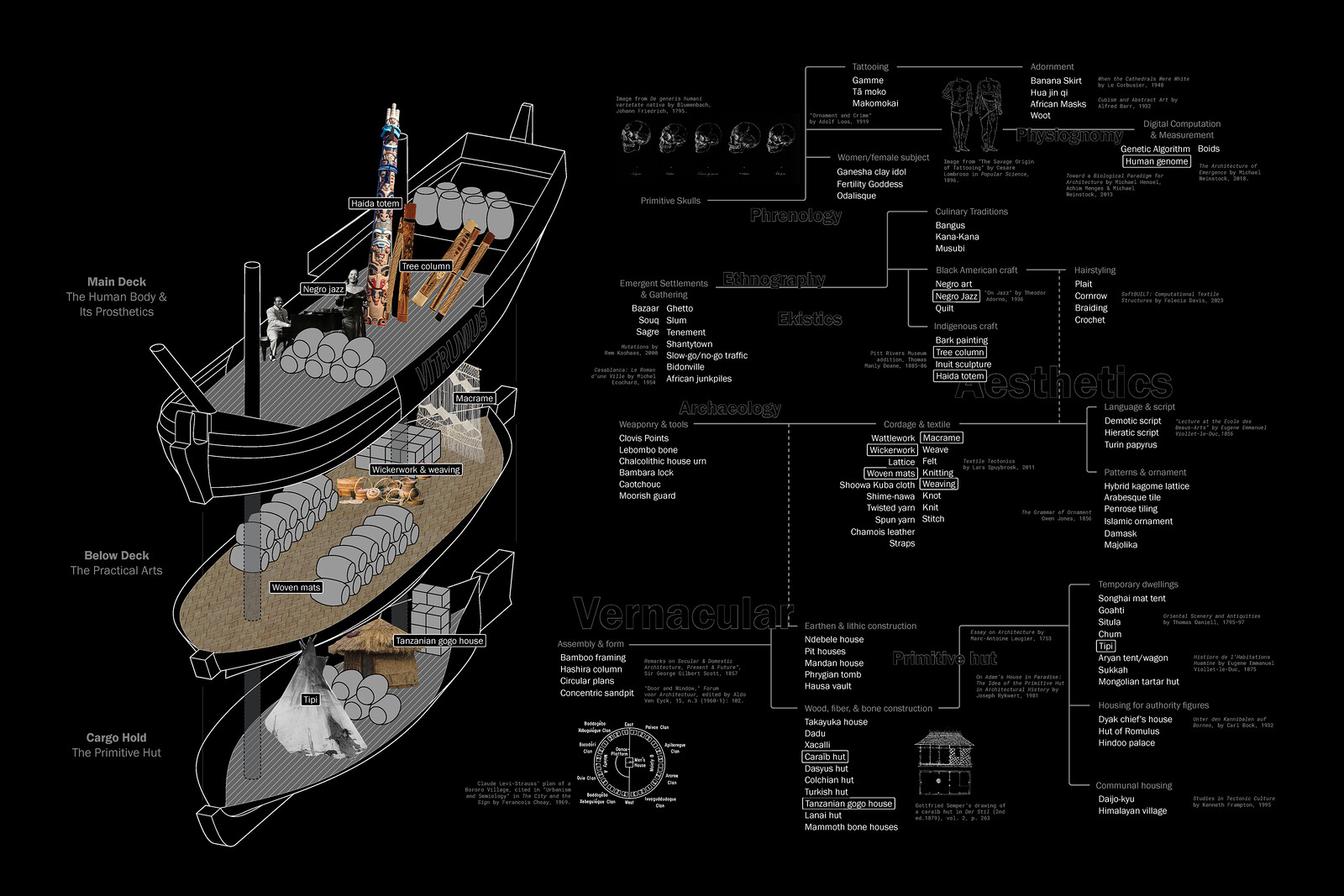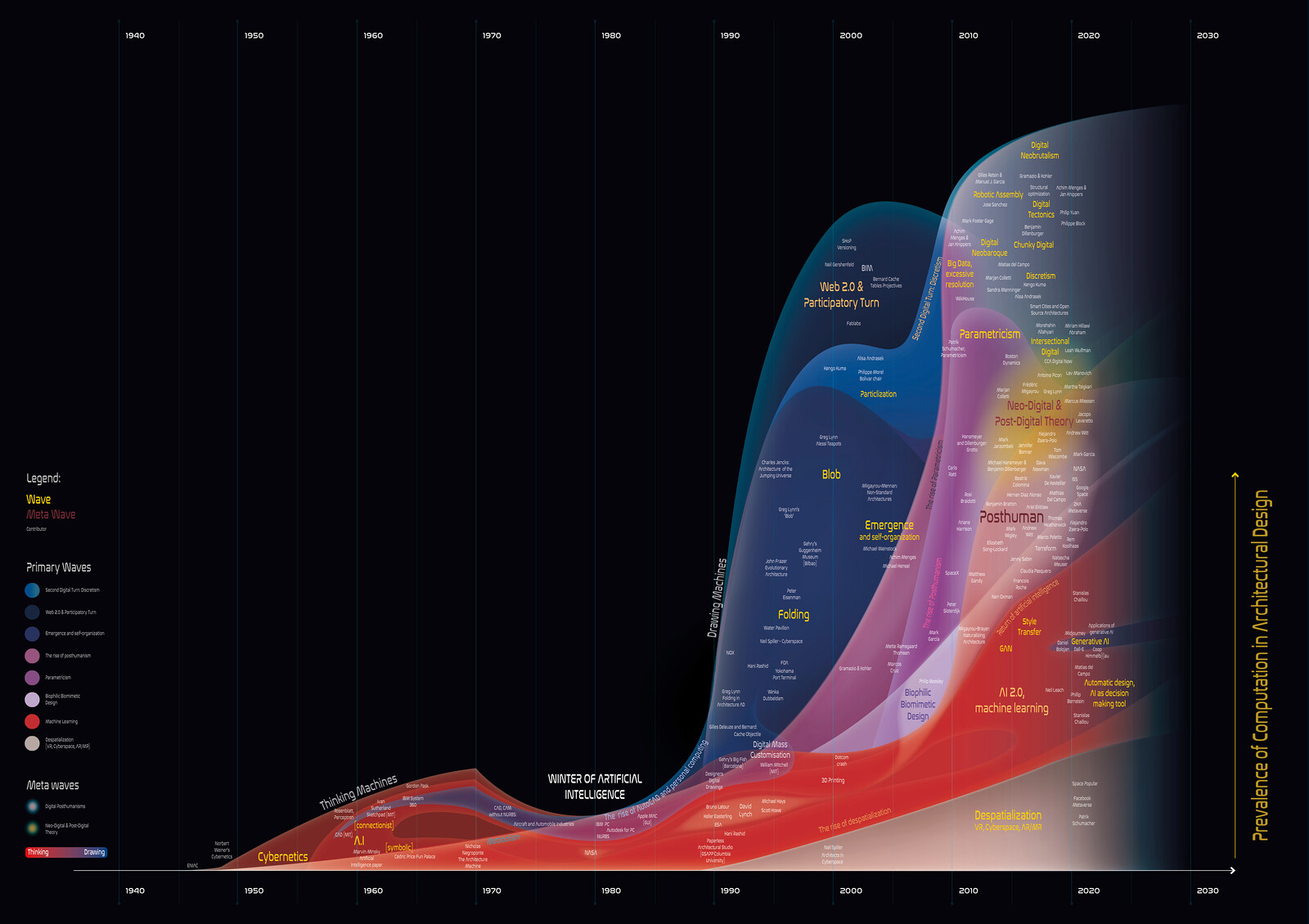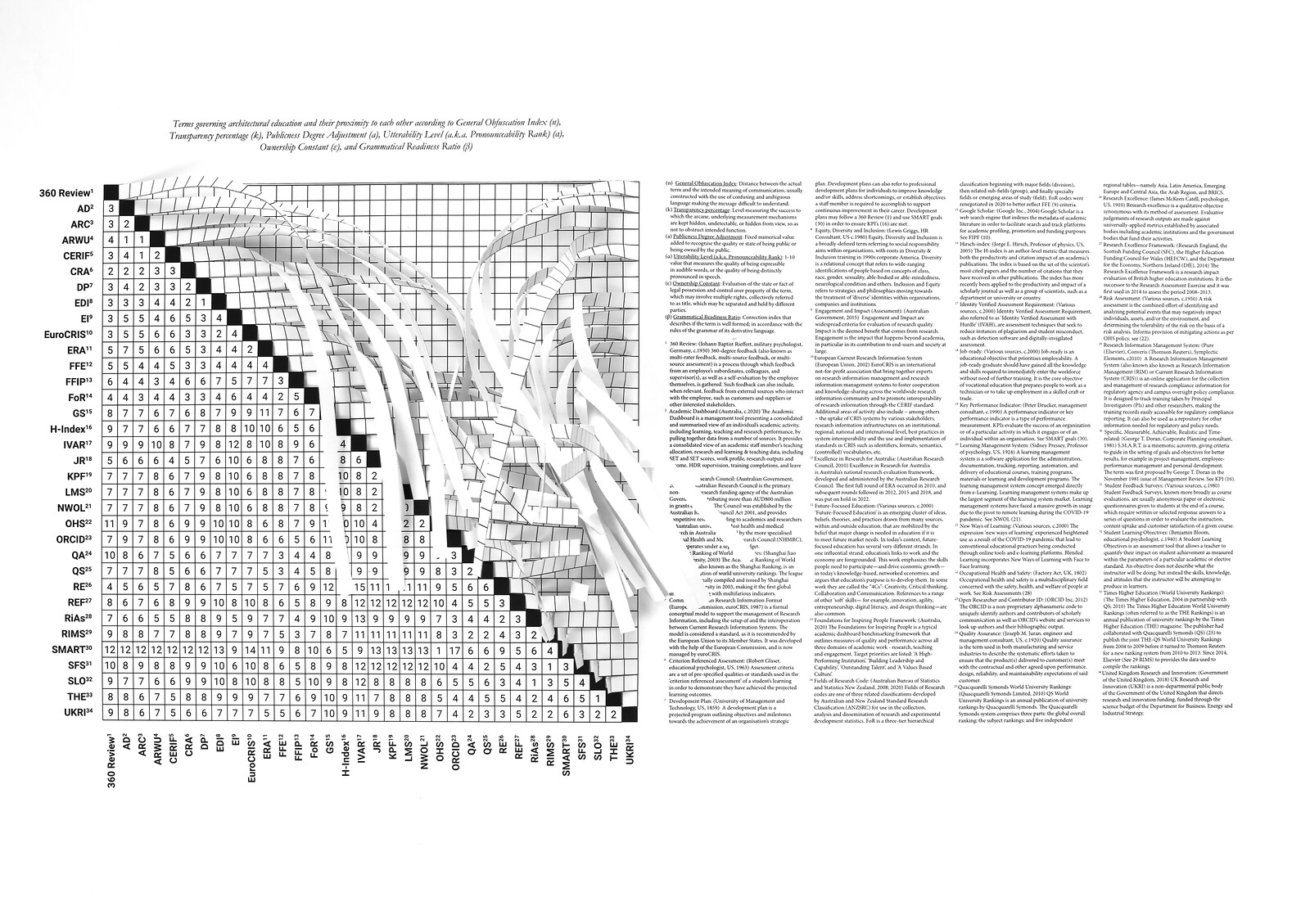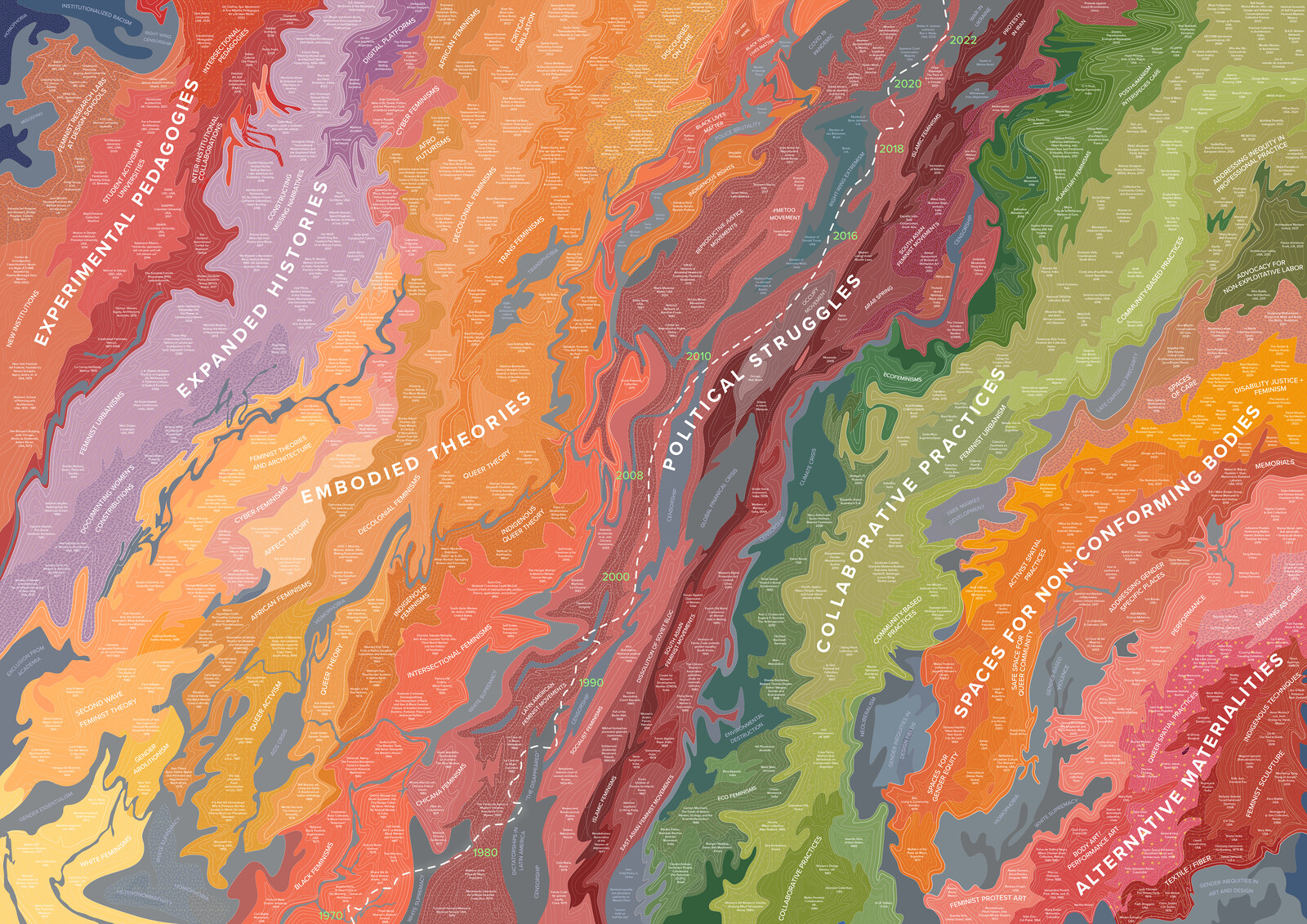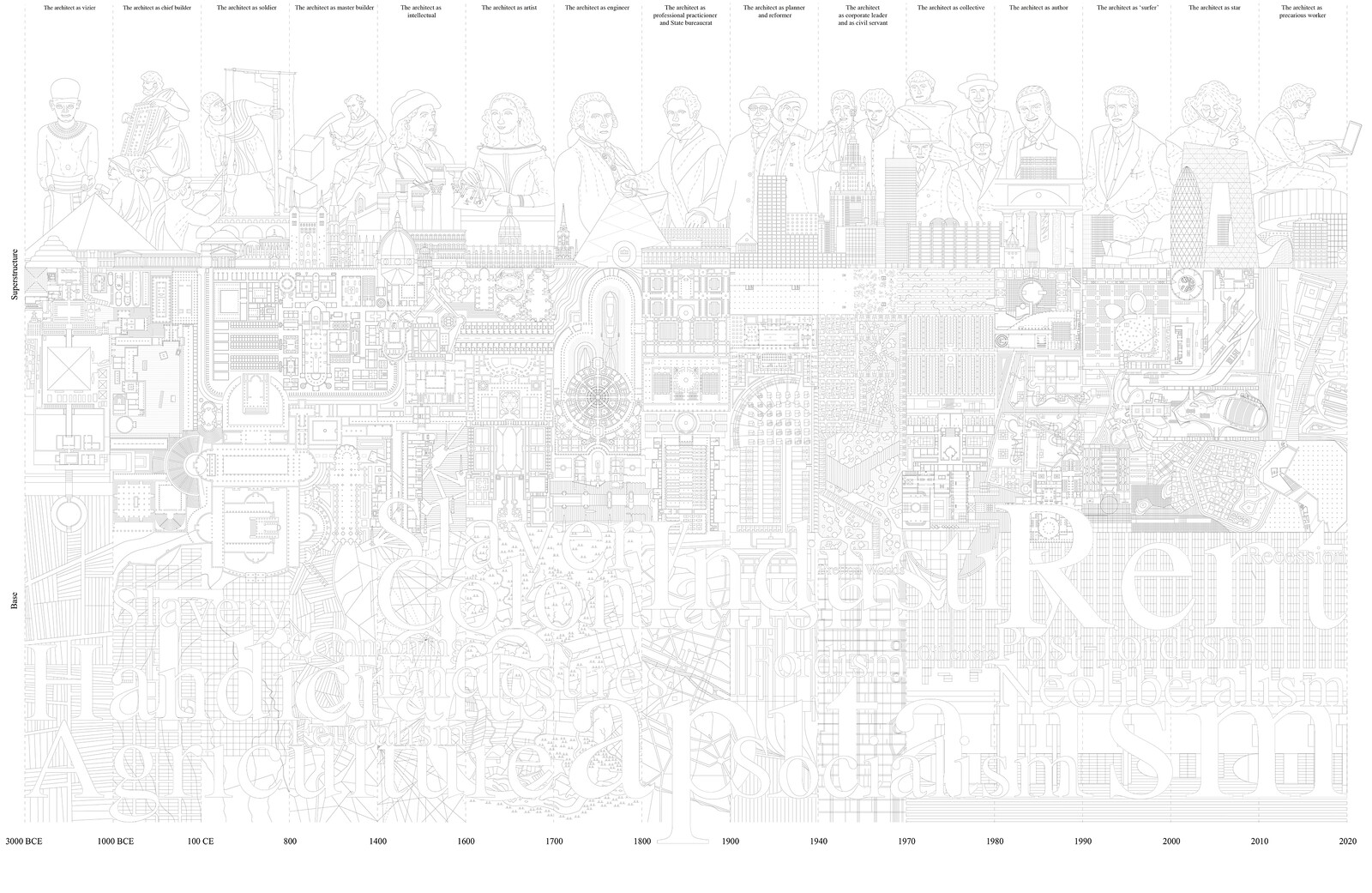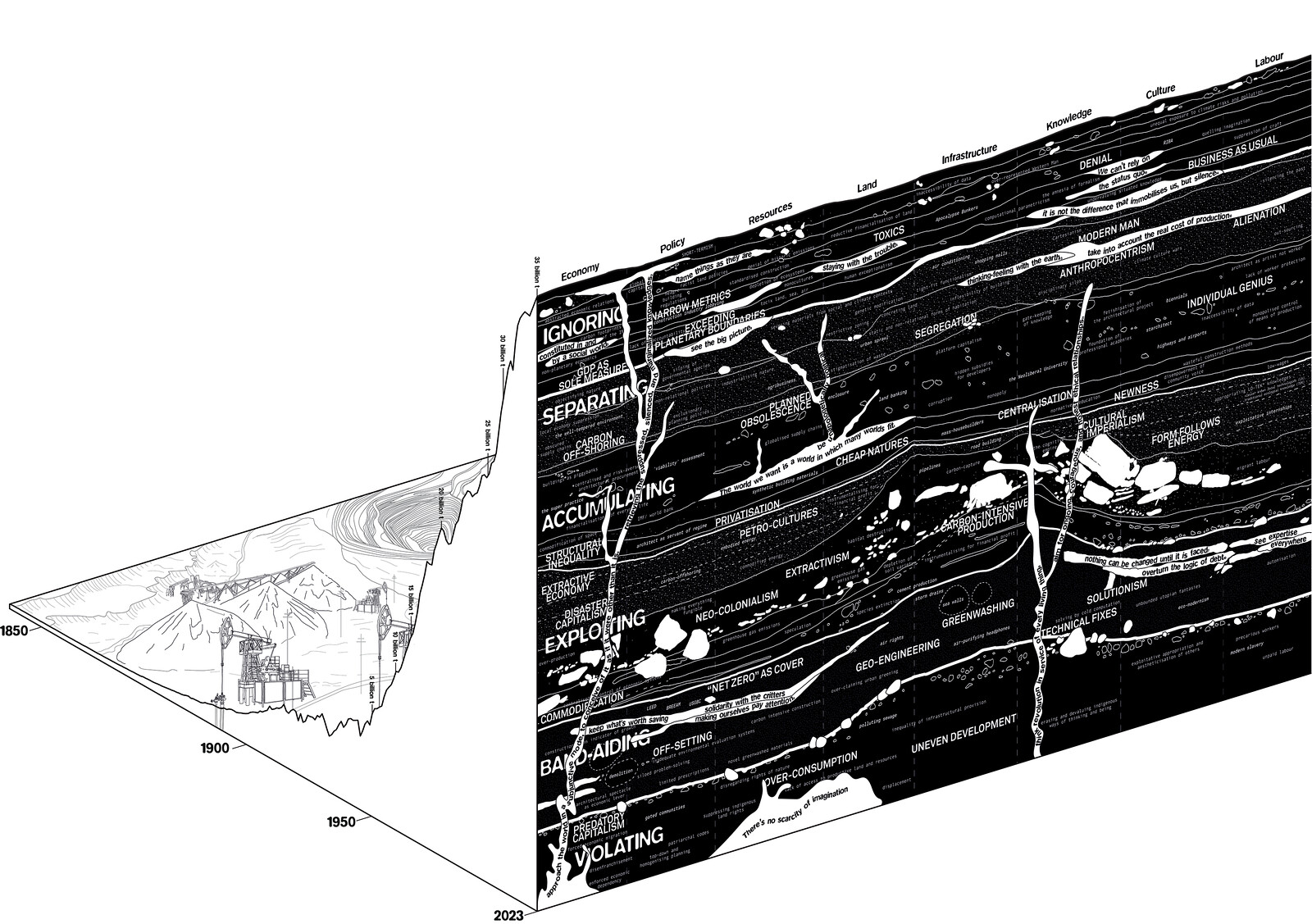Chronograms of Architecture is a collaboration between e-flux Architecture and the Jencks Foundation within the context of their research program “‘isms and ‘wasms” that takes inspiration from Charles Jencks’s diagrams. It features contributions by Pier Vittorio Aureli and Marson Korbi, Mario Carpo and Mark Garcia, Charles L. Davis II and Curry J. Hackett, Francesca Hughes and Urtzi Grau, MOULD, and Bryony Roberts and Abriannah Aiken. An exhibition of the six commissioned diagrams and an accompanying symposium will take place at the Architectural Association in London in May 2023.
“When ‘wasms became ‘isms,” Charles Jencks’s contribution to the first International Architecture Biennale in Venice (1980), mapped the various parallel streams and traditions of Post-Modern Architecture, exploring the edges, the eccentric, the bizarre, and the outsider cultures beyond the mainstream. In an attempt to grasp and reckon with the historical moment that he was living in, Jencks built on his earlier Evolutionary Tree diagrams, which laid out six ideologies that allowed him to categorize all the “isms” (and the “wasms”) of architectural culture on a divergent and diverse map. Architects, buildings, social trends, and technical innovations were plotted on a timeline in relation to these ideological streams. What resulted is the now-iconic image of a series of undulating blobs tracing architecture and society’s pulsations between different ideals though time.
Jencks’s historical method was inspired by Claude Levi Strauss’s structuralist analysis and Alfred Barr’s famous diagrams of abstract art. But in contrast to Barr’s reductionist view, which show the history of Modern Art converging into two formal movements, Jencks used the diagrams to explore and celebrate the plurality of positions within the Modern and Post-Modern periods. Beyond visualizing and classifying architectural styles and traditions, his diagrams provided a visual tool to analyze, understand, and represent dynamic relations between architecture and society. Jencks’s diagrams also show that the evolution of thought is non-linear and that architects are not faithfully committed to one methodology, but slip between streams to reappear in a competing or even opposing ideology, perhaps prompted by the lure of a new technology or the distrust of a style.
Despite the fact that his diagrams might give off a definitive appearance, Jencks’s diagrams were constantly under construction. Throughout his career, he would not only revise the contents—literally crossing out names, moving them to new locations, adding new ones—he would also rethink the diagram’s structural foundations. Jencks was sensitive to the fact that how information is presented largely determines how it is interpreted. The diagram’s form (and its latent metaphorical implications) was therefore of equal importance to its contents. Jencks’s diagrams sit somewhere between a map and a drawing, rendering and projecting at once. First created in 1969, the timeline stretched from 1920 to 2000, his diagrams were not only analytical, but also speculative. These were drawings of time that looked back to the past in order to predict the future. It is therefore important to recognize and read Jencks’s diagrams as moral exercises and projective acts: a diagnosis of the current state of things, as well as a provocation and call to action to change them.
It is in this spirit that we have commissioned six new Jencksian diagrams to reckon with the historical moment that we live in today. While none can possibly present a total account, in their own way they each reveal critical and urgent ways of seeing, understanding, and working in the architectural culture of the present. These six diagrams—perhaps six streams of a map of now—provoke questions around the techno-optimism and techno-bureaucracy, the feminist spatial practice and racial disparity, and the ecological implications and the productive conditions of architecture. Some of these new diagrams can be seen to fill in the undulating blanks on Jencks’s diagrams, while others take a whole new view all together on architectural discourse. And like Jencks, whose loose metaphor of overlapping streams or a tree structure was essential to his diagrams’ expressive power, each of these new diagrams do not rely solely on information and indexicality, but also, and in their own way, form and image. Taken as a whole, they start to elucidate not only how we got here, but also where we, and where architecture might be going.
Chronograms of Architecture is a collaboration between e-flux Architecture and the Jencks Foundation within the context of their research program “‘isms and ‘wasms.”
